Blue White Kitchen Design: Your Comprehensive Guide to Creating a Classy Culinary Haven
Table of Contents
Every home deserves a design that combines elegance and practicality, and the blue white kitchen combines classic elegance with modern sophistication. This timeless color combination has captured the hearts of homeowners and designers alike, creating spaces that feel fresh and invigorated. Whether you’re planning a complete renovation or simply want to refresh your existing space, understanding the basics of kitchen design will help you create a sophisticated culinary haven that will serve your family for years to come.
Kitchen design plays a pivotal role in our daily lives, impacting everything from meal preparation efficiency to family gatherings and entertaining guests. A well-designed kitchen isn’t just about looking beautiful; it enhances the cooking experience, increases the value of your home, and creates a welcoming atmosphere that draws people in. With the right approach to layout, storage, lighting, and aesthetic choices, your kitchen can become the crown jewel of your home.
Understanding Kitchen Designs: The Foundation of Great Design
The Classic Work Triangle
The kitchen work triangle remains the gold standard for functional design, connecting the sink, stove, and refrigerator in an efficient corridor. In a blue and white kitchen, this design is made even more appealing by using contrasting colors to define each zone. Place white cabinets around the sink area and incorporate blue elements near the cooking area to add aesthetic appeal while maintaining efficient workflow.
Popular Design Options
Corridor kitchens pair beautifully with blue and white color schemes. The linear design allows you to create a stunning corridor effect by alternating blue lower cabinets with white upper cabinets, or vice versa. This design increases efficiency in tight spaces while creating visual depth.
L-shaped kitchens offer tremendous flexibility for incorporating blue and white elements. You can choose to make one leg of the L predominantly blue while keeping the other white, creating a natural separation between the cooking and prep areas.
Island kitchens provide the perfect opportunity to add a distinctive touch to your blue and white kitchen. Consider a dark blue island surrounded by white cabinetry, or create a stunning focal point with a white island with blue bar stools and pendant lighting.
Choosing the Perfect Design
When choosing your blue and white kitchen design, consider your cooking habits, the size of your family, and your style of hosting. Active cooks benefit from layouts that minimize walking distances between main areas, while families who host guests frequently may prefer open layouts that encourage social interaction. Consider your home’s architectural constraints and natural light sources to make the best decision.
Smart Storage Solutions: Making the Most of Every Inch
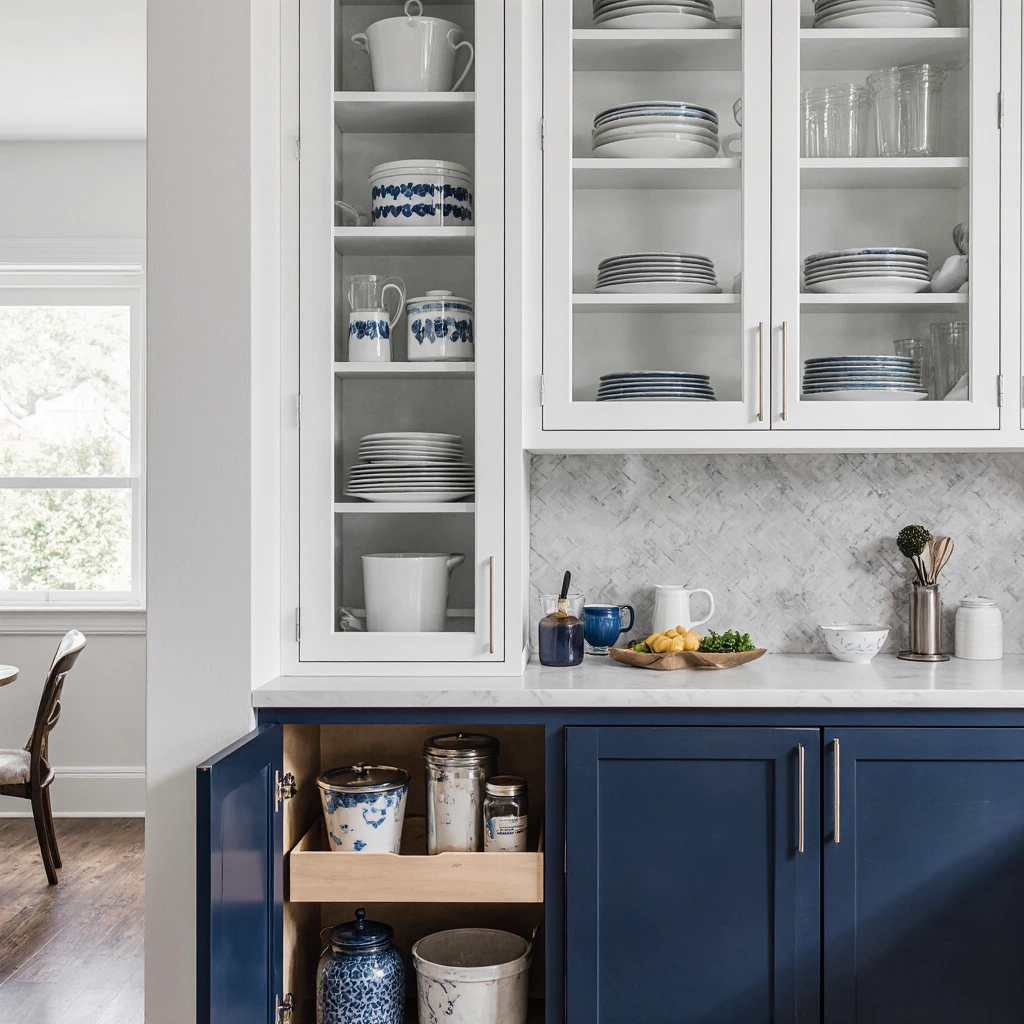
Cabinet Organization Strategies
Modern kitchen storage goes beyond traditional shelving. Pull-out drawers, small storage racks, and vertical dividers can transform your blue and white kitchen into an organizational masterpiece. Consider installing deep drawers in blue base cabinets for pots and pans, while using white upper cabinets with glass fronts to showcase your finest tableware.
Storage solutions have evolved significantly, with open pantries, pull-out storage systems, and built-in appliance garages becoming increasingly popular. In a blue and white kitchen, you can create a stunning pantry using blue shelving with a white background, or white shelving with blue organizing bins.
Innovative Storage Ideas
- Corner Solutions: Utilize blind corners with swing-out shelves or magic corners that make hard-to-reach items easier to access.
- Vertical Storage: Install ceiling-height cabinets to maximize storage space while drawing the eye upward.
- Hidden Storage: Use easy-open drawers, appliance racks, and built-in spice racks.
- Multifunctional Elements: Choose kitchen islands with built-in storage, seating, and prep surfaces.
Organization Tips for Long-Term Success
Successful kitchen organization requires thoughtful planning and regular maintenance. Group similar items together, store frequently used items at eye level, and invest in high-quality organizing tools that can withstand daily use. In your white and blue kitchen, consider using clear containers with blue labels or white containers with blue accents to maintain the color scheme while keeping everything organized.
Color Schemes and Backsplash Ideas: Creating Visual Harmony
The Psychology of Blue and White
Blue evokes feelings of calm, trust, and reliability, while white represents cleanliness, simplicity, and spaciousness. Together, these two colors create a blue-white kitchen that is sophisticated and welcoming. The key is finding the perfect balance between these two colors to create a space that reflects your personal style.
Color Contrasts and Their Impact
Dark blue adds a touch of luxury and elegance, especially when paired with crisp white cabinets and marble countertops. This combination works well in traditional and transitional kitchen designs.
Powder blue adds a softer, more rustic feel and pairs beautifully with white wood-paneled cabinets or Shaker-style cabinets. This combination is ideal for kitchens with a coastal or country feel.
Cobalt blue adds a bold touch and works well as an accent color in white kitchens. Consider using cobalt blue for your kitchen island or select cabinet doors. ### Backsplash Options for Blue and White Kitchens
Backsplashes are both practical and aesthetically pleasing in your blue and white kitchen. Here are some great options:
Subway tiles remain a timeless and versatile option. Try white subway tiles with blue grout for a subtle pop of color, or blue subway tiles with white grout for a bolder look.
Mosaic patterns allow you to combine both colors into intricate designs. Glass mosaics add sparkle and depth while maintaining your favorite color scheme.
Natural stone options like marble or travertine add sophistication and texture. Look for stones with blue veining to complement your color scheme.
The painted glass backsplash offers a sleek, modern look and can be coordinated to your liking with your favorite shade of blue.
Lighting Solutions: Combining Function and Atmosphere
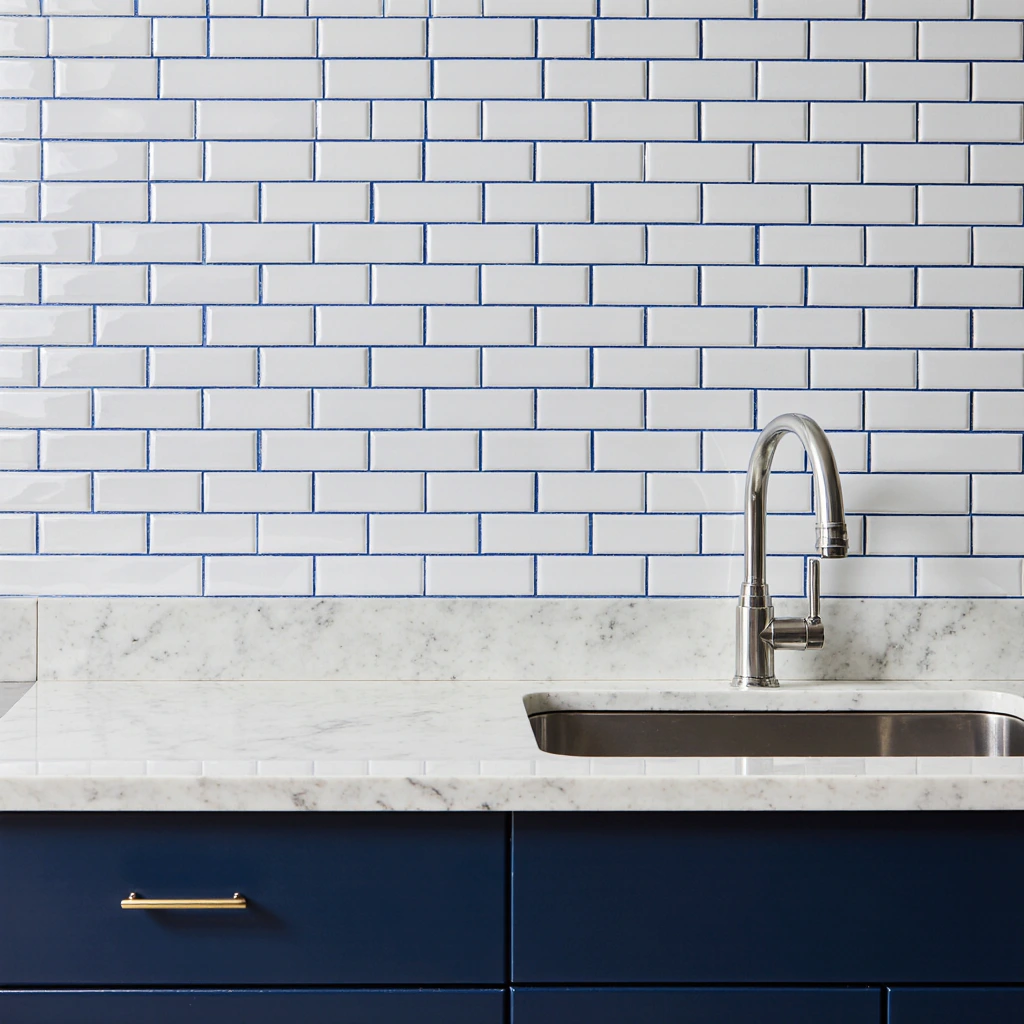
A Multi-Layered Lighting Approach
Successful kitchen lighting requires multiple layers to create both function and atmosphere. In your white and blue kitchen, lighting becomes even more important because it influences the appearance of your colors throughout the day.
Task lighting should effectively illuminate countertops. LED strips under the cabinets provide excellent lighting in white and blue kitchens, providing excellent task lighting and highlighting the kitchen backsplash.
Ambient lighting adds overall illumination and sets the mood. Recessed ceiling lights or built-in lighting units provide general illumination without overpowering your design.
Accent lighting adds a touch of luxury and highlights specific features. Consider using pendant lights over islands or decorative sconces to highlight the best features of your white and blue kitchen.
Lighting Selection and Distribution
Choose lighting fixtures that complement your white and blue kitchen design. Brushed nickel or chrome finishes work well with cool tones, while brass or copper add warmth. Pendant lights offer an excellent opportunity to add color or texture with glass shades or metal finishes.
Place lighting fixtures in specific locations to minimize shadows on countertops while creating a relaxing atmosphere for dining and gatherings. Install dimmer switches to adjust light levels throughout the day and for different activities.
Affordable Kitchen Design Upgrades
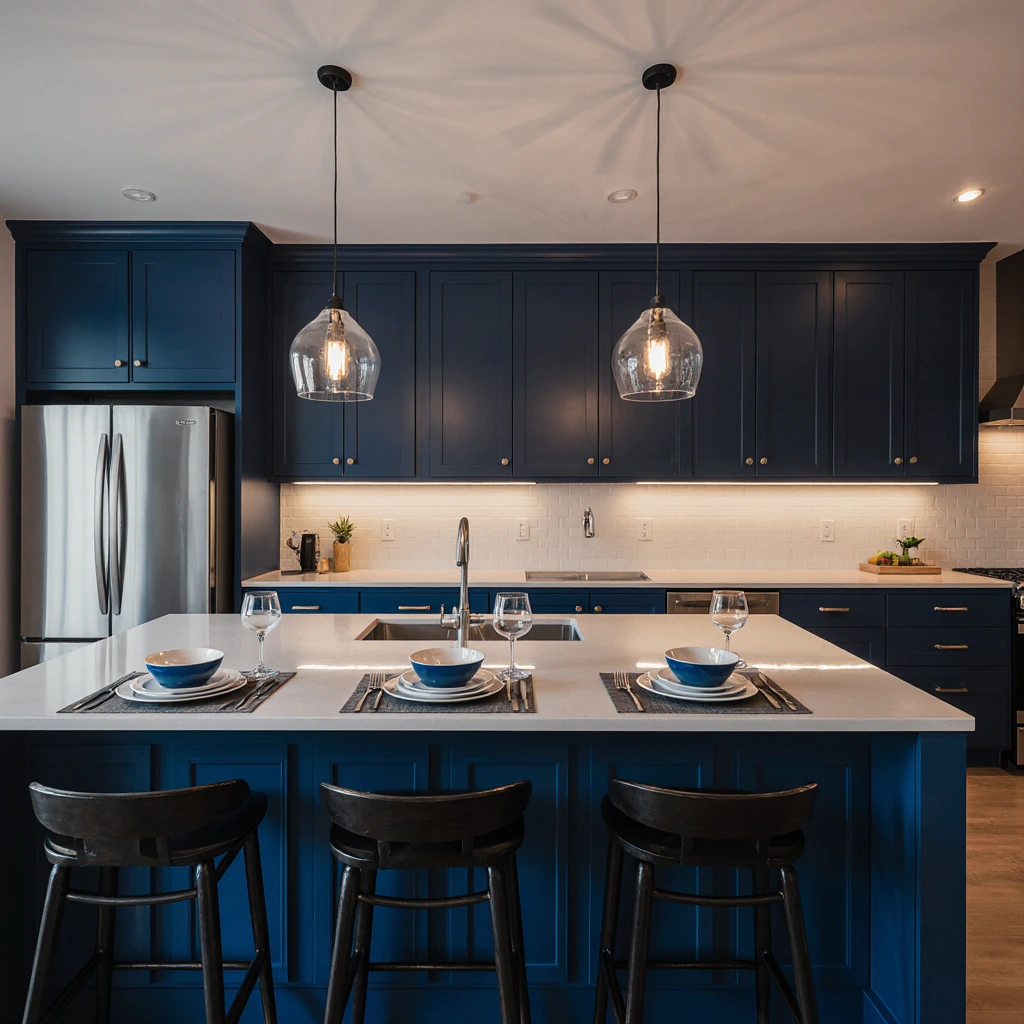
High-Impact, Low-Cost Improvements
Creating a stunning blue and white kitchen doesn’t require a complete renovation. Strategic upgrades transform your space without breaking the bank.
Cabinet refurbishment options include painting existing cabinets, replacing hardware, or adding new doors while keeping existing cabinets. This approach can save thousands of dollars and give you a completely new look.
Countertop alternatives to expensive stone include quartz composites, butcher block, or even high-quality laminates that mimic natural materials.
Backsplash updates can dramatically change the look of your kitchen. Peel-and-stick tiles, painted glass, or even temporary wallpaper can create stunning results within your budget.
Easy Projects
- Hardware Replacement: New door and window handles can add a modern touch to your kitchen.
- Lighting Updates: Replace outdated fixtures with contemporary alternatives.
- Open Shelving: Remove cabinet doors to create open storage and display space.
- Paint Projects: Fresh paint on your walls, cabinets, or trim can transform your space.
When to Invest vs. When to Save
Prioritize spending on items that impact performance and daily use, such as appliances and plumbing fixtures. Save money on decorative items that can be easily changed later, such as paint colors, accessories, and window treatments.
Common Kitchen Design Mistakes and How to Avoid Them
Planning and Design Mistakes
Insufficient countertop space is one of the most common kitchen design problems. Ensure there is adequate prep space near the sink and stove, and consider adding a kitchen island if space allows.
Low traffic can make even the most beautiful blue and white kitchen frustrating to use. Maintain clear pathways between main areas and avoid obstructing natural walkways.
Inadequate storage leads to cluttered countertops and frustration. Plan for 20% more storage space than you think you need, and allocate dedicated storage space for items like spices, cleaning supplies, and small appliances.
Color and Design Mistakes
Overmixing colors can make your kitchen look cluttered. Stick to a blue and white color palette, with one accent color to maintain harmony.
Ignoring natural light can affect the appearance of your colors throughout the day. Test paint colors and materials in different lighting conditions before making final decisions.
Mismatching design elements can create a disjointed look. Make sure your cabinetry, appliances, lighting, and accessories are all coordinated.
Practical Considerations
Always plan for adequate electrical outlets, good ventilation, and appropriate light levels. Consider your family’s needs and cooking habits when making design decisions.
Conclusion: Achieving Your Blue and White Kitchen Vision
Creating the perfect blue and white kitchen requires careful planning, attention to detail, and a clear vision of the desired outcome. By understanding the principles of good kitchen design, from layout and storage to lighting and color coordination, you can create a space that is both beautiful and functional.
Remember, the best kitchen design reflects your personal style and meets your family’s needs. Whether you choose an eye-catching combination of navy and white or a soft blue color palette, the key is to create a cohesive design that brightens your everyday life and brings joy to your home.
The journey to your dream kitchen doesn’t have to be overwhelming. Start with a clear plan, prioritize your needs, and make decisions that align with your budget and timeline. With thoughtful planning and execution, your blue and white kitchen can become the heart of your home for years to come.
Ready to start your kitchen renovation? We’d love to hear about your renovation plans and design ideas. Share your inspiration for your blue and white kitchen, challenges, or success stories in the comments below. Your experiences might inspire another homeowner to design their dream kitchen!
Best Amazon Picks :
FAQs
Q: What is the best ratio of blue to white in a kitchen design?
A: The ideal ratio depends on your space and preferences, but a common approach is 60% white, 30% blue, and 10% accent colors. This strikes a balance while allowing the blue to show its beauty without overwhelming the space.
Q: How do I choose the right shade of blue for my kitchen?
A: Consider your home’s style, natural light, and existing finishes. Dark blues work well for a traditional feel, while pale blues work well for a coastal feel. Test samples in different lighting conditions before making a decision.
Q: Can I mix different shades of blue in my kitchen?
A: Yes, but in moderation. Stick to a maximum of two shades—perhaps a darker blue for the lower cabinets and a lighter shade for the details. Make sure they are similar in color tones to ensure consistency.
Q: What countertop materials work best with blue and white kitchens?
A: White marble, blue-veined quartz, butcher block, and even dark granite can all be used to create a beautiful blue and white kitchen. Choose based on your personal preferences and maintenance requirements.
Q: How can I add blue to my kitchen without major renovations?
A: Start with accessories like bar stools, pendant lights, wall tiles, or cabinet hardware. These elements add a pop of color without permanent changes.
Q: Will a blue and white kitchen go out of style?
A: This classic color combination has been popular for decades and shows no signs of fading. It’s considered timeless because it’s elegant and versatile.
Q: What’s the best way to maintain white cabinets in a blue and white kitchen?
A: Use a high-quality paint with a semi-gloss or satin finish for easy cleaning. Wipe up spills immediately and clean regularly with mild, non-abrasive cleaners to maintain their appearance.
Q: How do I incorporate wood elements into a blue and white kitchen?
A: Natural wood adds warmth and texture. Consider using wood countertops, open shelving, or a kitchen island top. Choose wood shades that complement your blue color—light woods with powder blue, dark woods with navy.
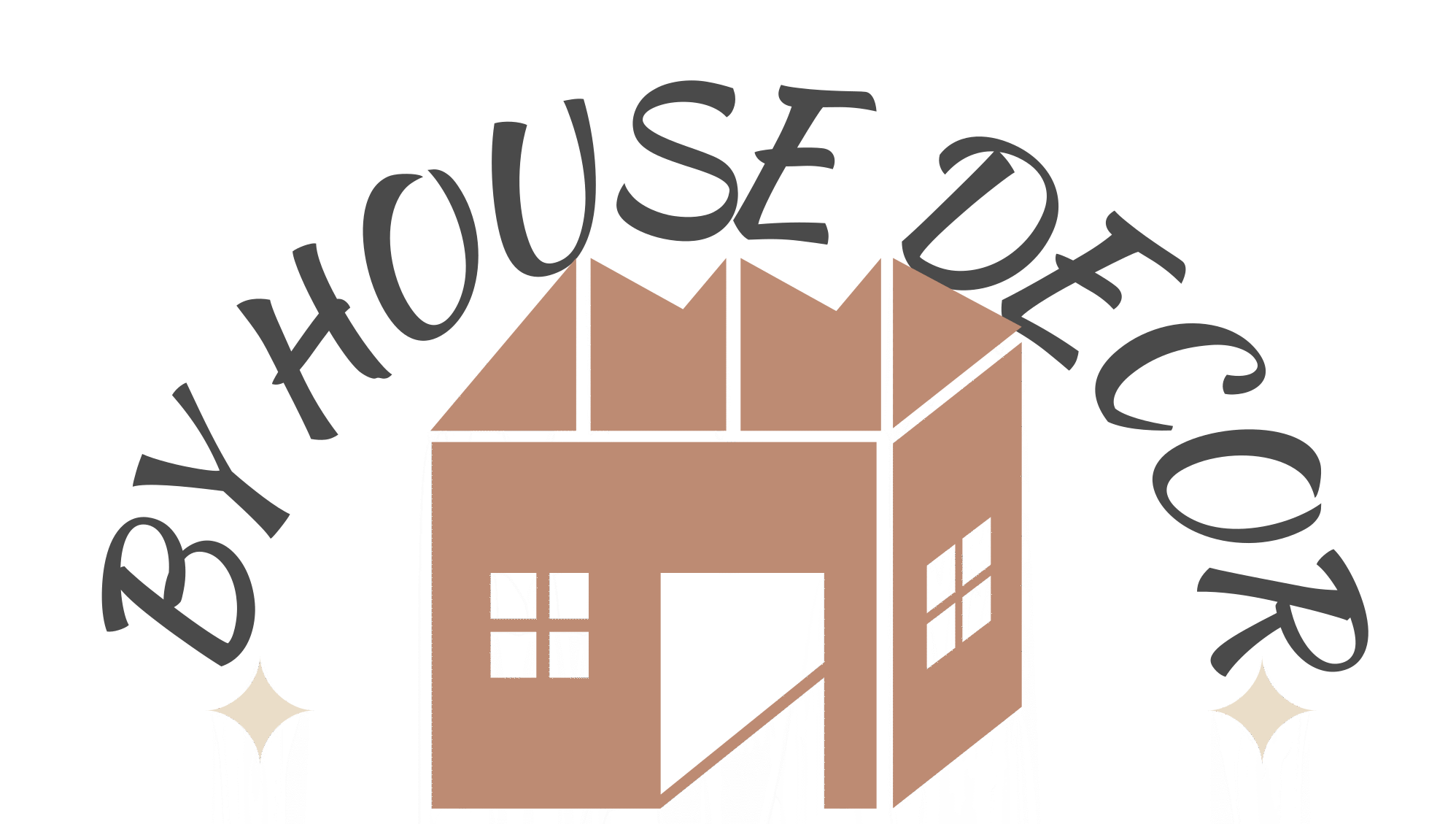
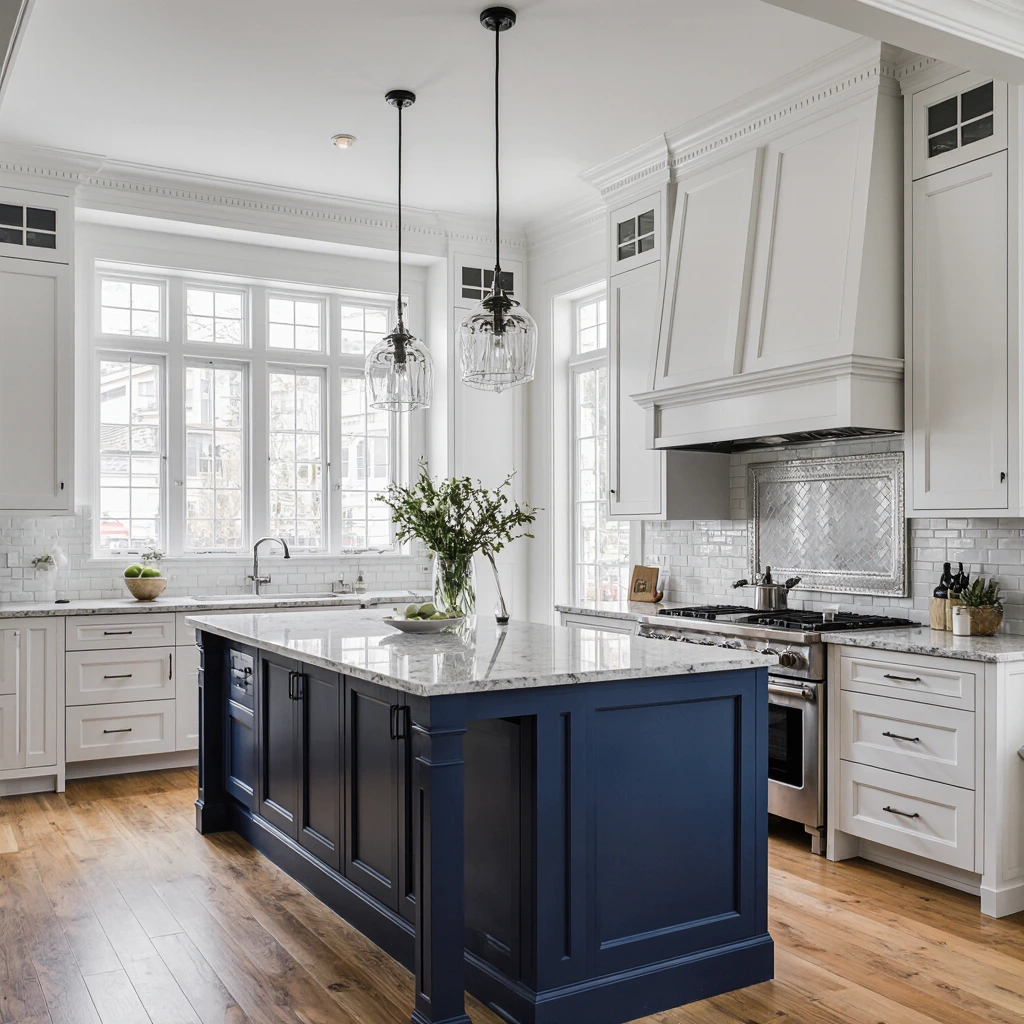
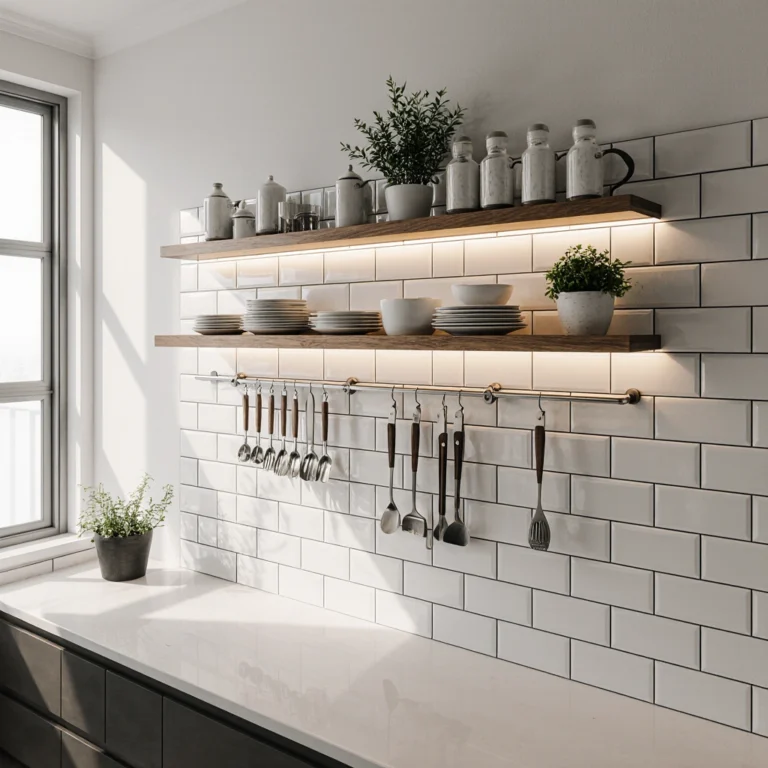
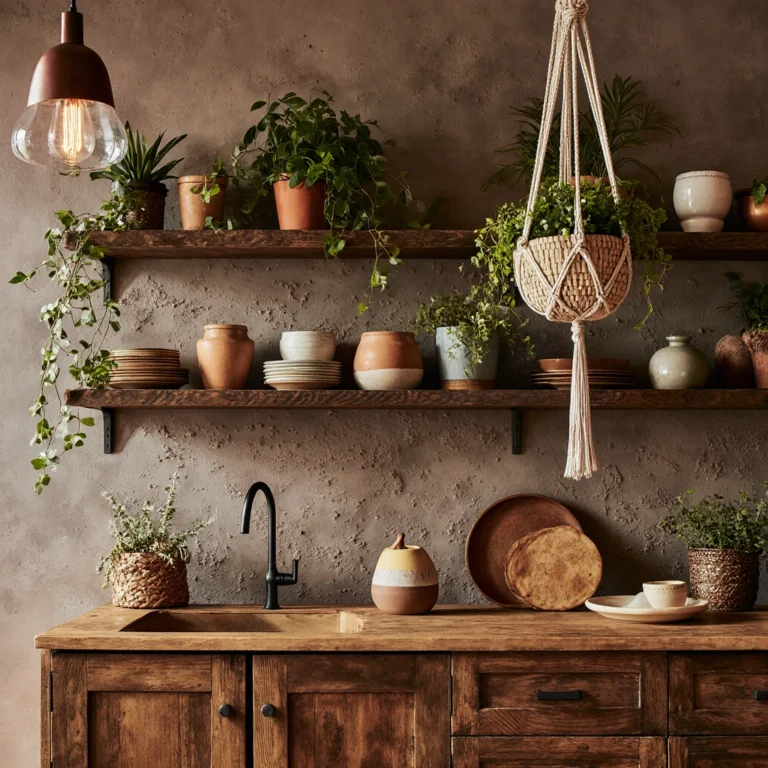
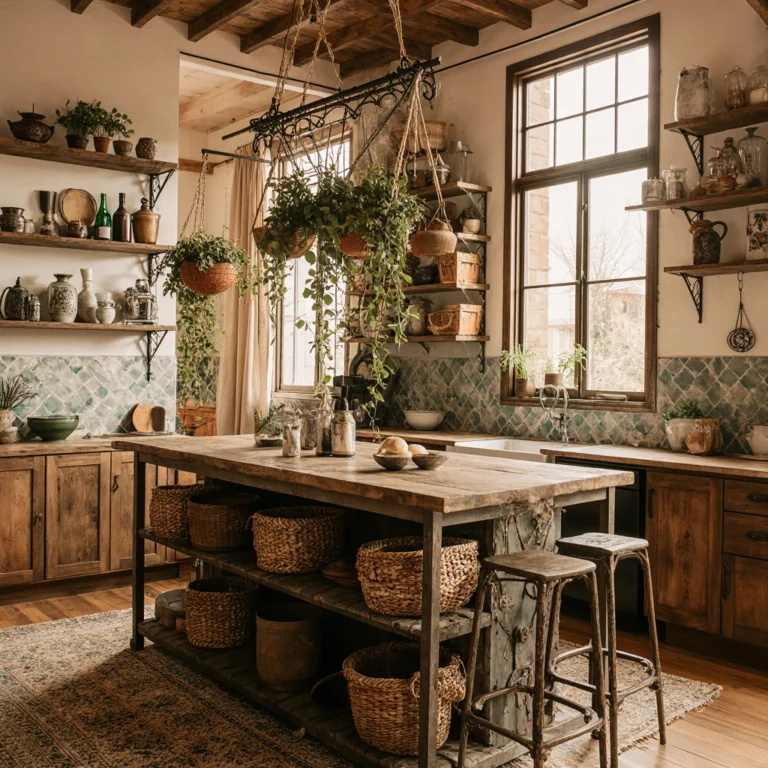
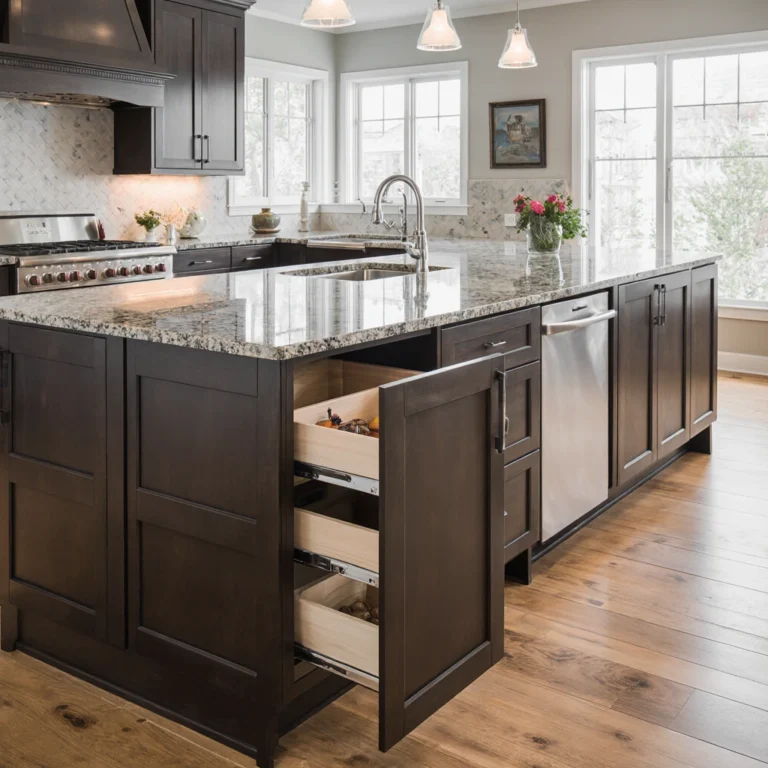
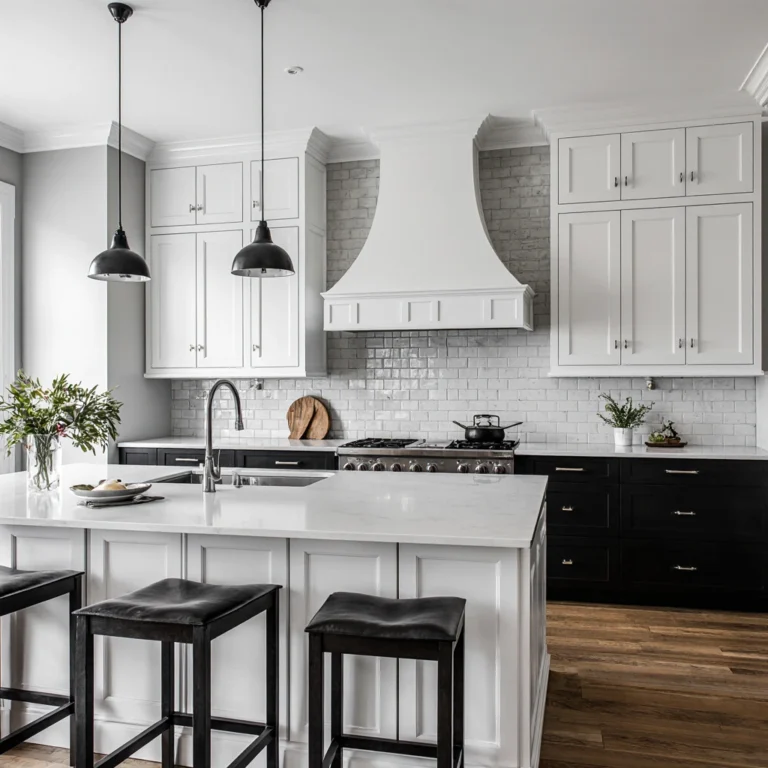
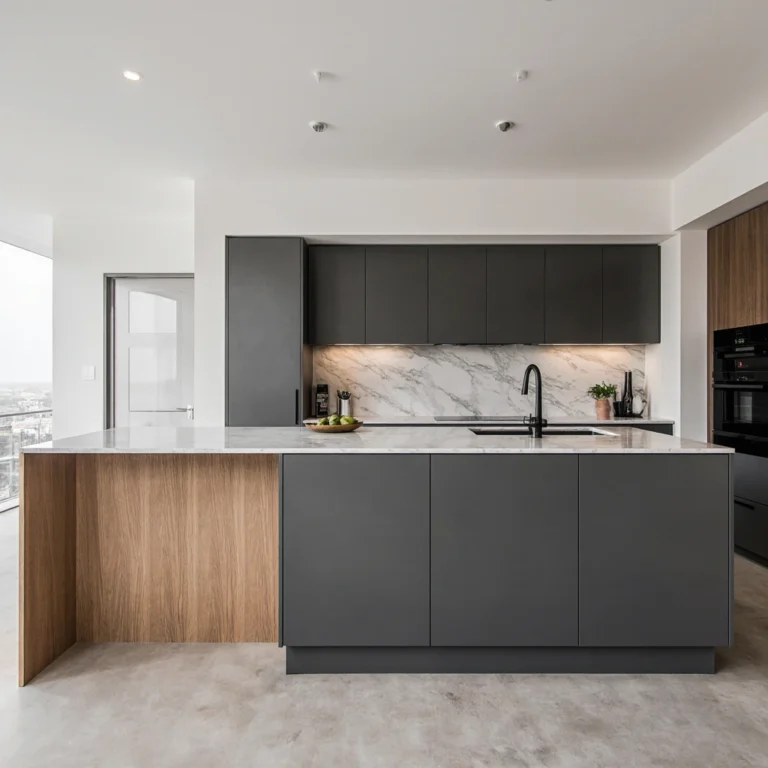
One Comment
Comments are closed.